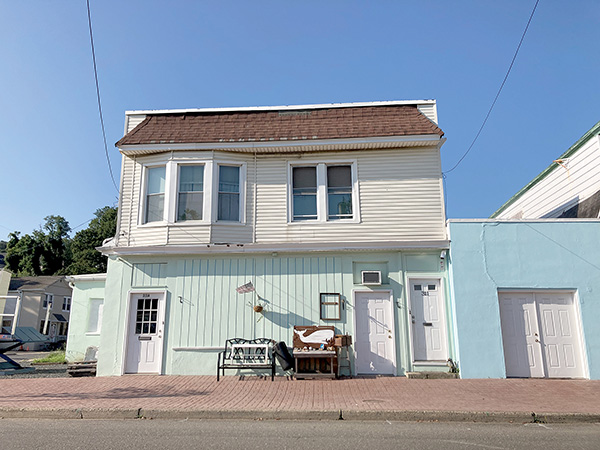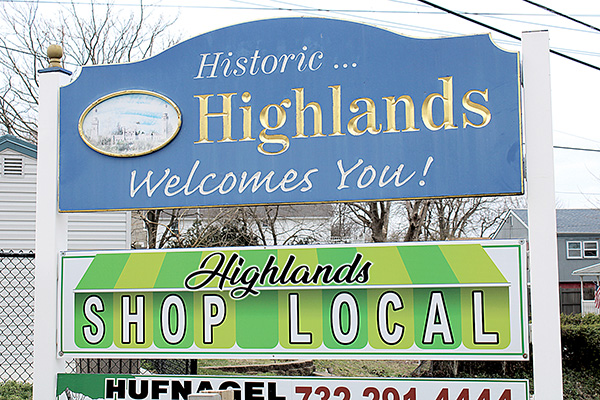
By Allison Perrine
HIGHLANDS – Empty, stale, small.
Those are the top three words that Highlands’ residents and business owners used to describe the borough’s Central Business District (CBD), which is currently being eyed for redevelopment, in a town-wide survey conducted Oct. 3 through 31.
Now, the plan is to present the information to the borough planner to aid in the effort to create an “inclusive, comprehensive, and all-encompassing Redevelopment Plan for Bay Avenue,” according to the borough.
The survey was conducted during a process that could lead to the redevelopment of up to 120 parcels in the CBD Zone under a noncondemnation plan, which would not include eminent domain. The area was deemed in need of redevelopment in a study prepared by Phillips Preiss Grygiel Leheny Highes LLC, Hoboken. It directly impacts the eastern section of Highlands, mostly properties along Bay Avenue which include a range of commercial businesses, mixed-use structures, single-family homes, parks and community facilities.
Currently, the borough is comprised of 4,621 residents with a median age of 52.5 years and a median household income of $60,638, according to data from the 2020 U.S. Census and U.S. Census American Community Survey from 2019. Additionally, about 32.9 percent of residents have a bachelor’s degree or higher while the poverty rate is about 7.2 percent.
All 4,000-plus residents were asked to respond to the survey, which was available electronically and in print. Of the 477 responses, 451 were residents (94.5 percent of respondents) and 56 were from those who work in town (11.7 percent), 24 were business owners (5 percent) and 139 identified as property owners (29.1 percent).
“Getting nearly 500 stakeholders is a big deal for a small town. With a base size that large the results are true to the full population by a high margin,” said Mayor Carolyn Broullon.
The results were published Nov. 8. The survey included 10 multiple choice and open-ended questions which were sourced from other redevelopment surveys in New Jersey. One question asked participants to select a few adjectives that described the look and feel of the CBD before the COVID-19 pandemic; the top 10 responses were empty, stale, small, evolving, dull, gritty, varied, boring, deserted and safe. There were 62 total adjectives to choose from.
Participants were later asked to select from the same list of adjectives to describe how they’d like the CBD to be in the future. The top choice was welcoming, followed by charming, friendly, attractive, clean, fun, safe, lively, active and beautiful.
But the most telling parts of the survey came from the open-ended responses. In the final question, individuals were asked to write any visions they have for the redevelopment plan. Some common themes were to address parking and flooding.
“There is a need for community parking, including accessible parking, better signage promoting Highlands’ businesses, community markers noting Highlands’ history, and smart design to preserve businesses and homes from flooding,” one person wrote.
“The parking situation here is horrible. You pay rent and can’t even get a spot by your house it’s absurd. We are looking to relocate after 6 years because of this problem,” another said.
“The flooding needs to be fixed. What is the incentivization to have a business downtown when it floods and have to go through the destruction and cleanup of property and inventory? Flooding should be taken care of then figure out what will survive. Perhaps just have all residential with a smattering of businesses,” another person wrote.
Others focused on aesthetics.
“No neon lights in shops, traffic lights, metered parking, or big signs,” said one person.
“Please, remove ugly electrical wires and slanted poles. Bring some general style to architecture and signs. Attract young people to the streets,” said another.
And to put it simply, one person wrote, “Underground Utilities!!!”
Other ideas included a municipal pool, arcade area for children, expanded ferry services, more diverse restaurants, a more diverse population, butchers, barbershops, a pharmacy, bookstore, an open beach and much more.
Broullon later said she would “love to see many of the niche shops that were mentioned in the open-ended answers.
“Getting a good mix is important to keeping our historic and salty character,” she said. “What did surprise me is that many people were asking for types of businesses that are already permitted by current zoning.”
The survey included some multiple-choice questions, one to gauge what currently draws people to the downtown area. Of the eight choices, restaurants and dining services received the most votes, followed by entertainment or special events, retail/shopping, recreation or fitness, personal services, and banking or personal finance. Religious services fell a distant seventh before “other.”
Taking it a step further, participants were asked to imagine that in 10 years, the plan has been successful and a “sustainable and vibrant Downtown Highlands has been built.” They were then asked to choose up to five statements to describe what that place looks like in their minds. The top five responses included: a great place to grab a drink and go out with friends; a safe and attractive place to walk and bike; a place with regular community events and activities; a place with a diversity of dining options; and a place with a diversity of retail/shopping options. There were 13 total statements to choose from, including one that touched on being a “welcoming place for people of diverse racial and ethnic backgrounds” which was chosen by 143 individuals.
Broullon reminds residents that this area of redevelopment is a statutory zoning tool for changing use, height, parking and other requirements in town.
“We are using this tool along with the voice of the stakeholders to guide the planners to make zoning adjustments to the study area,” she said.
The article originally appeared in the November 18 – 24, 2021 print edition of The Two River Times.















